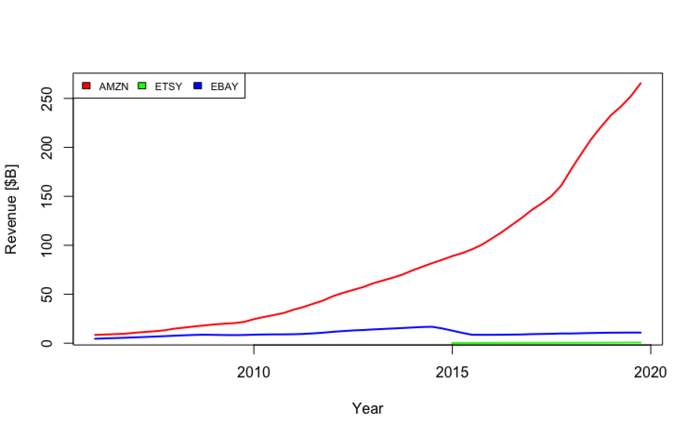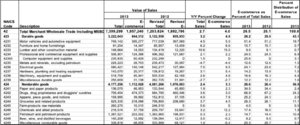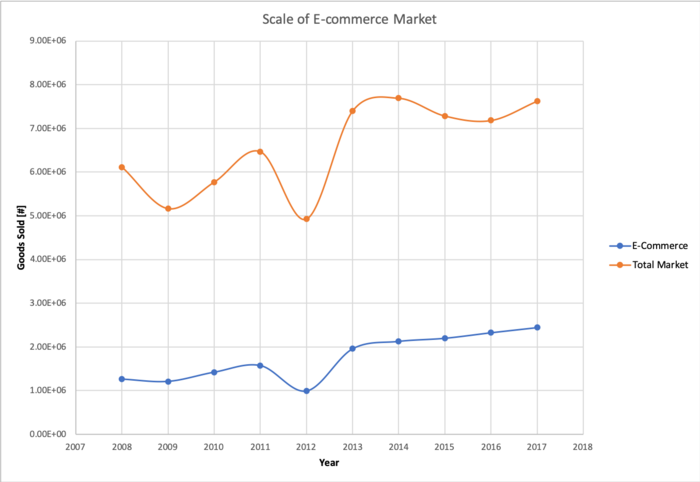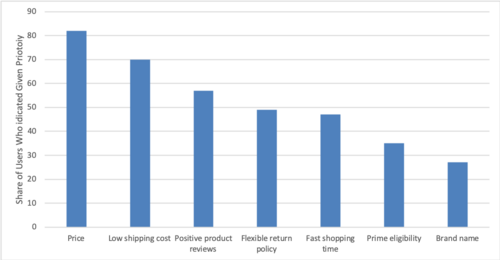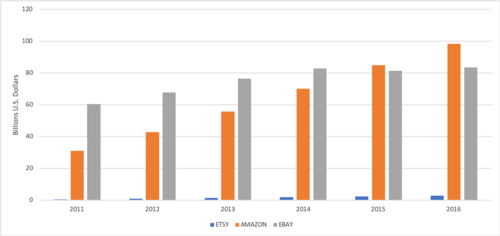Difference between revisions of "Online Reverse Procurement Marketplaces and Auctions"
| Line 231: | Line 231: | ||
==Technology Strategy Statement== | ==Technology Strategy Statement== | ||
A technology roadmap should conclude and be summarized by both a written statement that summarizes the technology strategy coming out of the roadmap as well as a graphic that shows the key R&D investments, targets and a vision for this technology (and associated product or service) over time. | |||
Our target is to develop a multi-purpose reverse online procurement auction, focused on services of medium complexity, which would be broadly generalizable across different medium complexity service segments. To achieve a '''target monthly adoption level of twice the churn rate for the marketplace''' (both sides), we focus on '''enhancing trust mechanisms''', '''efforts to reduce apparent complexity''' (through API's similar to Mechanical Turk), and '''lowering customer acquisition costs (and reducing churn/multi-homing) through marketing and financial incentives'''. <br> | |||
'''Trust mechanisms''' are divided into '''three groups''' ('''average reviews per service offering''', '''average visibility - number of watchers - per service offering''', and '''average rating per service offering'''). These can be measured and quantified to determine tipping points to move towards acquisition doubling churn. | |||
Complexity appearance reduction mechanisms include service question forums, simplified formats for posting and searching services, and focusing on services that result in transactions with lower communication costs. Service question metrics include the number of questions (both new and depth of strains) and can be regressed against transaction speed and closure rates. Formats can be tested similar to A/B testing, focusing on formatting decisions that reduce question and answer iterations and improve transaction velocity. | |||
'''Lowering customer acquisition costs (and reducing churn/multi-homing)''' through marketing and financial incentives are similar to currently available best practices. Churn is the process of users leaving a marketplace. Multi-homing is the process of users switching constantly between multiple websites, resulting in false positives for marketplace adoption. Here, marketing efforts (both inbound and outbound) can be used and measured regarding their impact on customer acquisition costs and churn/multi-homing. Financial incentives operate in the same way that eBay and Amazon constantly tinker with there product margin rates to either attract sellers or maximize revenue. Similarly, Upwork uses a scaled financial model, encouraging recurrent users to stay on the marketplace (and avoid outside deals) by reducing the margins over time and use. This is similar to accelerators for sales people, though in reverse. | |||
We divide '''service complexity''' as follows. Low complexity are tasks that can be understood in a few minutes or less, required no training, and were measurable/scorable as successful or not within less than a minute or by computer programs. Mechanical Turk by Amazon focuses on low complexity services. High complexity tasks involve complex projects, such as specifically tailored consulting, legal, or R&D projects, where stakeholder analysis and ideation would be key success factors. Medium complexity projects are similar or less complex than those currently available on Upwork. They include projects for recurrent problems, where customer-provider could be generated through a few simple interactions either online or via voice/video communications. | |||
For the 2SEA roadmap the statement could read as follows: | |||
Our target is to develop a new solar-powered and electrically-driven UAV as a HAPS service platform with an Entry-into-Service date of 2030. To achieve the target of an endurance of 500 days and useful payload of 10 kg we will invest in two R&D projects. The first is a flight demonstrator with a first flight by 2027 to demonstrate a full-year aloft (365 days) at an equatorial latitude with a payload of 10 kg. The second project is an accelerated development of Li-S batteries with our partner XYZ with a target lifetime performance of 500 charge-discharge cycles by 2027. This is an enabling technology to reach our 2030 technical and business targets. | |||
Revision as of 21:57, 18 November 2019
Technology Roadmap Sections and Deliverables
Roadmap Overview
Clear and unique identifier:
3RPM - Reverse Procurment Markets
This Roadmap focuses on online reverse procurement marketplaces and auctions, which are online marketplaces and auctions where service providers bid on different service requests from people and companies in need of contract work. Examples include Upwork, Mechanical Turk, and other industry specific markets and auctions. While no reverse procurement auction or marketplace exists at scale, many product marketplace do, including Amazon and eBay. Accordingly, we have considered both product and service e-commerce marketplaces for the purpose of developing this roadmap.
The chosen figure of merit is user base, measured as either active buyers (of products) or service providers (for services). We have chosen to segment by several major e-commerce platforms of both services and products, which generally show the relative scope and growth of each sector. The below chart is a dual axis chart, showing the impact of major developments in e-commerce technology through the grey line and user bases over time through the separately plotted dots.
Figure of Merit: User Base [# buyers of products, providers of services]
Theoretical Limit: World Population
(all transactions for goods/services are online)
The technology that we will consider through a technology roadmap is online reverse procurement marketplaces and auctions, which are online marketplaces and auctions where service providers bid on different service requests from people and companies in need of contract work. Examples include Upwork, Mechanical Turk, and other industry specific markets and auctions.
Design Structure Matrix (DSM) Allocation
Roadmap Model using OPM
Figures of Merit
Scale [%] [$ of services transacted online/$ of total services transacted online & offline]
User Base [# Total Active Users] (can subdivide to separate sides of market: buyers and service providers)
Average Margin [%] [average of market fee / total transaction value] (declining margin shows broad acceptance and use along with industry maturity)
Transaction Speed [Seconds]
[measured from payor’s initial interest in seeking contract work to contracting, and does not include fulfillment time (which may or may not be shortened)]
While these four figures of merit are very good in terms of quantifying the scope and impact of existing marketplaces, they do not provide a pathway for efficient and effective marketplace advancement. In fact, in looking at the approaches by various platform startups over the years, it appears that brute force efforts have been made to impact these key metrics. For example, with Uber and Lyft, two ride-sharing platform businesses, both companies have subsidized both sides of the market (drivers and passengers) in order to increase their scale and user bases. In this section, we discuss each figure of merit at a greater level of depth, before proposing several other figures of merit that feed into impact these top-line figures of merit.
Scale
[FLEMING TO ENTER]
User Base
[FLEMING TO ENTER]
Average Margin
In considering the figure of merit, Average Margin, have have reviewed the current and/or historical margins for eBay, Amazon, Etsy, Upwork (services marketplace), and Mechanical Turk (Amazon procurement marketplace for simple e-commerce tasks). These marketplaces appear to use their margins either in the same way that the ocean container shipping behemoths use their margins, to drive out competition at opportune times (by reducing margins), or to increase revenue in times of scarce competition on a particular sector. In the early days of eBay, the margins were set by founder Pierre Omidyar, often as a way to control volume on the website (rather than as a revenue maximizing effort). Omidyar was heavily influence by considerations of fairness and community input, and set easy to understand lower margins. Over time, both eBay and Amazon have developed complex revenue models, with different margins on different product lines, which seem to maximize revenue by understanding the product providers' tolerance levels, price effectively against e-commerce and other purchasing avenues, and in order to increase product availability. Etsy has a similarly complex fee structure, meant to encourage or discourage certain seller behaviors. Further, e-commerce use additional cost strategies to prevent phantom listings and other negative actions, encourage referrals, and to generate other advantageous behaviors.
For service marketplaces, including both Upwork and MTurk (Mechanical Turk), the margin is set currently at 20% of the value of the service, which seems to balance the need for a robust set of service providers with revenue demands of these businesses. In order to discourage outside the marketplace transactions, Upwork has instituted a margin reducing schedule based on lifetime earnings of Upwork contractors. For example, once certain lifetime revenue thresholds have been met, workers yield less of their earnings to Upwork.
Accordingly, margins are helpful to generally understanding overall market maturity and ongoing competitive dynamics, they are not simple measures that can help gauge the robustness and scope of any e-commerce market.
Transaction Speed
In considering the figure of merit of speed, we looked at the transaction speed to conduct trade between New York and California between 1825 and the present. We considered two components to the conduct of trade, the time to connect with the opposite party (either in person or through another communication method) and the time to consummate payment. We considered the fastest forms of communication and payment. For example, we skipped payment by check, as in person currency transactions and remote Western Union payments eclipsed the speed of checks at early dates. Further, we did not consider service fulfillment times and deliberation times, which may or may not be reduced over time, but are not necessarily related to the development of faster markets.
Alignment with Company Strategic Drivers
In preparing this section, we recognized that our technology is an online reverse procurement auction, which is neither a company nor a product. Rather, this is a complex system of systems impacted by a complex variety of factors and understandable only through using many frameworks at different levels of scale. Accordingly, we focused on one aspect of this system, e-commerce companies and the system as a whole.
This section is written from the perspective of Etsy. Etsy is an online retailer that focuses on the direct sale of specialized products to customers. Common things you might find on Etsy for sale or things like custom furniture, artistic pieces, and specialized leather goods. The marketplace generally focuses on creating artistic and unique pieces for small customer bases, but has an extremely devout group of users and is very much a niche product to market that people come to for a specific reason.
| Number | Strategic Drivers | Alignment And Targets |
|---|---|---|
| 1 | To increase the amount of active yearly sellers uniformly across the available categories | Etsy will aim to increase the percentage of active yearly sellers by 5% year over year, and focus on attaining sellers of products in under-represented categories |
| 2 | To increase the amount of yearly active buyers on the platform | For every 1% gain in sellers we will aim to increase the number of active buyers on the platform by 3%. The demand for products should encourage more sellers to come to the platform |
| 3 | To maintain a consistent year over year growth in revenue | Revenue is not as much of a primary driver as gaining scale is but is key to gaining future investment and increasing internal development efforts on new initiatives |
Positioning of Company vs. Competition
The above Pie Chart captures the fact that Amazon dominates the online e-commerce market. 56% of all e-commerce interactions, as reported by similar web, were via Amazon.com. Amazon is a dominant entity in the space because it has achieved a massive scale, an extremely high user base, and high customer satisfaction and "stickiness." Stickiness is a common phrase used to describe the number of things that bring a user back to a certain online marketplace. In the case of Amazon, these are things like prime shipping, Amazon video, Amazon music, and discounts at related stores like Whole Foods. All of these factors combined to make Amazon an extremely dominant force in e-commerce that is unlikely to waiver over the coming years.
From the perspective of a company like Etsy, which only captures about 3% of the total e-commerce market, there are two views and perspectives to take. Either you take the view that there is very large upside potential still left in the e-commerce space, or that you have missed the opportunity for mass adoption and growth of your e-commerce platform is low so you should, therefore, lean into your niche marketplace. Without an abundance of data it's hard to see with the right approach it, what we can do is illustrate the fluctuating revenues that the smaller market places are seen when compared to that of their large scale competitors. The figure below highlights Etsy, eBay, and Amazon revenue from their inception.
What is clear from this graph is that Etsy was in no way a disruptor to the dominance of Amazon in the e-commerce marketplace. But this is expected. Etsy did not enter this marketplace with the intent of being the source for everything you would ever need (like Amazon wants to be). Etsy entered into this sector to fill a niche desire that was under-addressed by the larger players in the space.
Technical Model & Financial Model
Challenge: Because the system at the root of this wiki page is a non-physical complex system of systems, writing a technical model has been challenging. There are not underlying physic equations that govern how these complex e-commerce markets work, but rather a series of frameworks across many different disciplines that explain components of the system of systems at various scales and assuming different boundaries. The approach we have taken to capture and build a model for how the system performs is a couple of different data science methodologies, both regression and classification-based, that leverage large amounts of data on the key companies and the environment in which the companies are operating.
To this end, the major sources of data we were able to collect and use for these underlying models are:
1) Financial Data (From Company Inception)
- Revenue
- Profit
- Margin
2) Ecommerce vs Conventional Commerce Data (22 different economic Sectors, 2009 - 2017)
- Total Merchant Wholesale Trade Including MSBOs2
- Durable goods
- Motor vehicles and automotive equipment
- Furniture and home furnishings
- Lumber and other construction material
- Professional and commercial equipment and supplies
- Computer equipment and supplies
- Metals and minerals, excluding petroleum
- Electrical goods
- Hardware, plumbing and heating equipment
- Machinery, equipment and supplies
- Miscellaneous durable goods
- Nondurable goods
- Paper and paper products
- Drugs, drug proprietaries and druggists' sundries
- Apparel, piece goods, and notions
- Groceries and related products
- Farm-products raw materials
- Chemicals and allied products
- Petroleum and petroleum products
- Beer, wine, and distilled beverages
- Miscellaneous nondurable goods
Initial approaches to leverage all the above data in a regression model proved impossible, due to all the coupling. Attempts at a CART model also shown little insight into the underlying mechanics of how these complex marketplaces perform.
Scale of E-Commerce Market:
Key Factors for User Retention of Amazon:
The key factors above provide insight into the factors outside of scale that contribute to user retention of these major platforms. What stand out most is that price is the key consideration that users use to validate their choice in a given marketplace. Other factors having to due with flexibility and ease of use also play a major role in user satisfaction.
Gross Merchandise Volume:
"Gross Merchandise Volume (alternatively Gross Merchandise Value or GMV) is a term used in online retailing to indicate a total sales dollar value for merchandise sold through a particular marketplace over a certain time frame. Site revenue comes from fees and is different from the dollar value of items sold.[1]
GMV for e-commerce retail companies means sale price charged to the customer multiplied by the number of items sold. For example, if a company sells 10 books at $100, the GMV is $1,000. This is also considered as "gross revenue". In this case, the business model is based on a retail model, where the company basically purchases the items, maintains inventory (if need be) and finally, sells or delivers the items to customers. It does not tell the net sales as GMV does not include costs involved and returns of products." (https://en.wikipedia.org/wiki/Gross_merchandise_volume)
Key Publications, Presentations and Patents
A. Patents
Information about patents is set forth below. Unlike in the section concerning literature review, in an abundance of caution, we stayed close to the abstract definitions in describing these technologies. We also felt that these abstracts provided the best explanation of the patented technology. As shown below, eBay was a forerunner in developing technology and processes that undergird e-commerce today.
Name: Information presentation and management in an online trading environment
Patent #: 6058417
Inventors: Hess; Martin L. (Aptos, CA), Wilson; Michael K. (Los Gatos, CA)
Assignee: eBay Inc. (San Jose, CA)
Date: May 2, 2000
Abstract: A method and apparatus for information presentation and management in an online trading environment are provided. According to one aspect of the present invention, person-to-person commerce over the Internet is facilitated by providing prospective buyers the ability to quickly preview items for sale. Images are harvested from a plurality of sites based upon user-supplied information. The user-supplied information includes descriptions of items for sale and locations from which images that are to be associated with the items can be retrieved. Thumbnail images are created corresponding to the harvested images and are aggregated onto a web page for presentation at a remote site. According to another aspect of the present invention, a user may submit a query to preview items for sale. After receiving the query, thumbnail images corresponding to items that satisfy the user query are displayed, each of the thumbnail images previously having been created based upon a user-specified image.
Name: Method and apparatus for verifying the identity of a participant within an online auction environment
Patent #: 6466917
Inventors: Goyal; Anoop (East Palo Alto, CA), Poon; Alex D. (Los Altos Hills, CA), Wen; Wen (Cupertino, CA)
Assignee: eBay Inc. (San Jose, CA)
Date: October 15, 2002
Abstract: A method and apparatus for verifying identity of a participant in a network-based transaction facility are described. According to one embodiment, user interface information is provided to the participant via a communications network. The user interface information specifies an identity verification interface for obtaining personal information of the participant. The personal information of the participant is passed to a third party for verification via the communications network. Subsequently, a verification result is received from the third party via the communications network. The verification result is then communicated to the participant via the communications network.
Name: Generic attribute database system for storing items of different categories having shared attributes
Patent #: 6604107
Inventors: Wang; Hsiaozhang Bill (San Jose, CA)
Assignee: eBay Inc. (San Jose, CA)
Date: August 5, 2003
Abstract: Embodiments of the invention provide a method and apparatus for storing multiple items across different categories in a database. One embodiment of the present invention provides a database that includes an attribute value table that has item entries for items of different categories. Each item entry has attribute values for attributes of the items. The database also includes an attribute map table that has attribute map entries. The attribute map entries have attribute map values. Additionally, an attribute value is associated with an attribute map entry, such that the attribute values are translated based on the attribute map values of the associated attribute map entry. In one embodiment, the translating of an attribute value includes determining an attribute type associated with the attribute value.
Name: Method and system for supplying automatic status updates using electronic mail
Patent #: 7139726
Inventors: Fisher; Alan S. (Fremont, CA), Kaplan; Samuel Jerrold (Hillsborough, CA)
Assignee: eBay Inc. (San Jose, CA)
Date: November 21, 2006
Abstract: A system is disclosed for automatically updating the status of customers’ orders and shipments via electronic mail without using a human attendant to create and send the electronic mail messages. Preferably implemented in software, the updating system allows a large set of customers to be periodically updated over a computer or communications network via electronic mail. The system includes a database for maintaining order and shipping status and other relevant information.
Name: Generic attribute database system
Patent #: 6778993
Inventors: Wang; Hsiaozhang Bill (San Jose, CA)
Assignee: eBay Inc. (San Jose, CA)
Date: August 17, 2004
Abstract: Embodiments of the invention provide a method and apparatus for storing multiple items across different categories in a database. One embodiment of the present invention provides a database that includes an attribute value table that has item entries for items of different categories. Each item entry has attribute values for attributes of the items. The database also includes an attribute map table that has attribute map entries. The attribute map entries have attribute map values. Additionally, an attribute value is associated with an attribute map entry, such that the attribute values are translated based on the attribute map values of the associated attribute map entry. In one embodiment, the translating of an attribute value includes determining an attribute type associated with the attribute value.
B. Literature Review
We considered a variety of articles, beyond those listed below, and focused our discussion on five important articles, which include early analysis of e-commerce and online auctions and more recent consideration of online procurement marketplaces.
In considering the evolution of e-commerce, we started with MIT graduate David Lucking-Reiley’s early work on electronic auctions and e-commerce in general, reviewing three articles (David Lucking-Reiley, 2000; David Lucking-Reiley & Daniel F. Spulber, 2001; Lucking-Reiley, 2000).
David Lucking-Reiley considered internet auctions in “Auctions on the Internet: What’s Being Auctioned, and How?” (Lucking-Reiley, 2000). Lucking-Reiley canvassed the history of internet auctions dating back to the mid-1990’s, which were often completed with meager technological support (Lucking-Reiley, 2000). The paper went on to describe the composition of popular internet auctions in terms of volume, velocity, products, business models, and auction formats (Lucking-Reiley, 2000).
Also in 2000, Lucking-Reiley provided more detail on auction theory as applied to e-commerce (David Lucking-Reiley, 2000). Vickrey auctions, achieving true value bids through second price auctions, and their precursors were explained in detail (David Lucking-Reiley, 2000). This paper provided an in depth historical treatment of commerce in general, from the lens of auction development over time (David Lucking-Reiley, 2000).
In “Business-to-Business Electronic Commerce,” Lucking-Reiley and Daniel F. Spulber provide an early analysis of the potential of e-commerce (David Lucking-Reiley & Daniel F. Spulber, 2001). They promote the vast potential, now realized, of electronic transactions, and detail the cost efficiencies from automated transactions, the benefits of market making including reduced search costs and other marketplace advantages, expected consolidation of marketplace due to returns to scale, and organizational design impacts (David Lucking-Reiley & Daniel F. Spulber, 2001).
Next, we reviewed more recent articles concerning the gig economy and the presence of procurement marketplaces on the internet (Ljungh, 2019; Mortleman, 2018; Popiel, 2017).
In “Are the Workers in the On-Demand Economy Employees, Independent Contractors, or a Hybrid Category?”, Doina Ljungholm tackles a critical question and potential limitation in the growth of online procurement auctions and marketplaces, namely, the legal reality of online workers (Ljungh, 2019). Ljungholm details primary considerations and concerns of the on-demand workers that fuel portions of the e-commerce world (Ljungh, 2019). Notably, many of the considerations, both from the business and worker perspectives gather around variability and flexibility, for both sides (Ljungh, 2019).
In “Gig for Victory,” Jim Mortleman describes the increasing need for on-demand “gig” workers and the reality that higher order jobs are now being worked by ad hoc contractors (Mortleman, 2018). One outstanding question, whether highly variable service quality is an initial learning curve or a permanent state of a distributed marketplace, is considered in some detail (Mortleman, 2018). Mortleman makes several interesting points concerning frustrations with the corporate world and new offerings such as “teams-as-a-service (TaaS)” to conclude the piece (Mortleman, 2018).
Finally, we identified one article reviewing whether the platform economy is sustainable (Culkin, 2019).
Culkin, B. (2019). Is Platform Capitalism Sustainable? Digital Business Models, On-Demand Labor, and Economic Growth. Journal of Self-Governance & Management Economics, 7(1), 31–36. https://doi.org/10.22381/JSME7120195
David Lucking-Reiley. (2000). Vickrey Auctions in Practice: From Nineteenth-Century Philately to Twenty-First-Century E-Commerce. The Journal of Economic Perspectives, (3), 183.
David Lucking-Reiley, & Daniel F. Spulber. (2001). Business-to-Business Electronic Commerce. The Journal of Economic Perspectives, (1), 55.
Ljungh, D. P. (2019). Are the Workers in the on-Demand Economy Employees, Independent Contractors, or a Hybrid Category? Linguistic & Philosophical Investigations, 18, 119–125. https://doi.org/10.22381/LPI1820197
Lucking-Reiley, D. (2000). Auctions on the Internet: What’s Being Auctioned, and How? Journal of Industrial Economics, 48(3), 227.
Mortleman, J. (2018). Gig for Victory. Computer Weekly, 28–31.
Popiel, P. (2017). “Boundaryless” in the creative economy: Assessing freelancing on Upwork. Critical Studies in Media Communication, 34(3), 220–233. https://doi.org/10.1080/15295036.2017.1282618
Technology Strategy Statement
A technology roadmap should conclude and be summarized by both a written statement that summarizes the technology strategy coming out of the roadmap as well as a graphic that shows the key R&D investments, targets and a vision for this technology (and associated product or service) over time.
Our target is to develop a multi-purpose reverse online procurement auction, focused on services of medium complexity, which would be broadly generalizable across different medium complexity service segments. To achieve a target monthly adoption level of twice the churn rate for the marketplace (both sides), we focus on enhancing trust mechanisms, efforts to reduce apparent complexity (through API's similar to Mechanical Turk), and lowering customer acquisition costs (and reducing churn/multi-homing) through marketing and financial incentives.
Trust mechanisms are divided into three groups (average reviews per service offering, average visibility - number of watchers - per service offering, and average rating per service offering). These can be measured and quantified to determine tipping points to move towards acquisition doubling churn.
Complexity appearance reduction mechanisms include service question forums, simplified formats for posting and searching services, and focusing on services that result in transactions with lower communication costs. Service question metrics include the number of questions (both new and depth of strains) and can be regressed against transaction speed and closure rates. Formats can be tested similar to A/B testing, focusing on formatting decisions that reduce question and answer iterations and improve transaction velocity.
Lowering customer acquisition costs (and reducing churn/multi-homing) through marketing and financial incentives are similar to currently available best practices. Churn is the process of users leaving a marketplace. Multi-homing is the process of users switching constantly between multiple websites, resulting in false positives for marketplace adoption. Here, marketing efforts (both inbound and outbound) can be used and measured regarding their impact on customer acquisition costs and churn/multi-homing. Financial incentives operate in the same way that eBay and Amazon constantly tinker with there product margin rates to either attract sellers or maximize revenue. Similarly, Upwork uses a scaled financial model, encouraging recurrent users to stay on the marketplace (and avoid outside deals) by reducing the margins over time and use. This is similar to accelerators for sales people, though in reverse.
We divide service complexity as follows. Low complexity are tasks that can be understood in a few minutes or less, required no training, and were measurable/scorable as successful or not within less than a minute or by computer programs. Mechanical Turk by Amazon focuses on low complexity services. High complexity tasks involve complex projects, such as specifically tailored consulting, legal, or R&D projects, where stakeholder analysis and ideation would be key success factors. Medium complexity projects are similar or less complex than those currently available on Upwork. They include projects for recurrent problems, where customer-provider could be generated through a few simple interactions either online or via voice/video communications.
For the 2SEA roadmap the statement could read as follows:
Our target is to develop a new solar-powered and electrically-driven UAV as a HAPS service platform with an Entry-into-Service date of 2030. To achieve the target of an endurance of 500 days and useful payload of 10 kg we will invest in two R&D projects. The first is a flight demonstrator with a first flight by 2027 to demonstrate a full-year aloft (365 days) at an equatorial latitude with a payload of 10 kg. The second project is an accelerated development of Li-S batteries with our partner XYZ with a target lifetime performance of 500 charge-discharge cycles by 2027. This is an enabling technology to reach our 2030 technical and business targets.
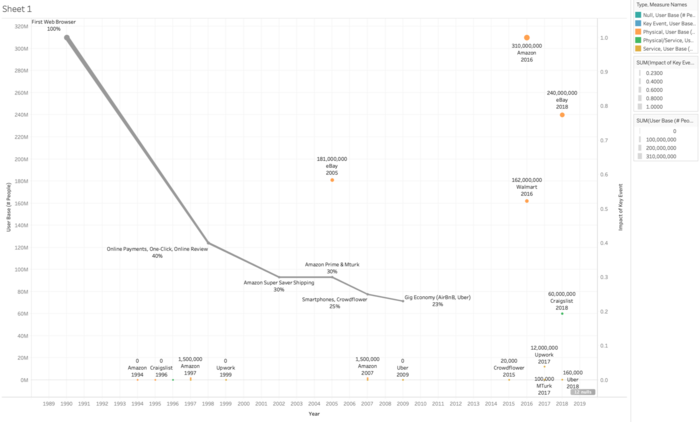
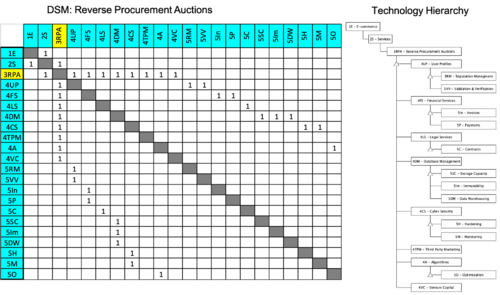
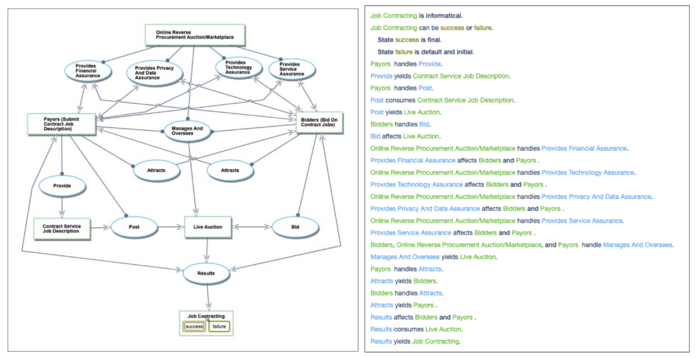
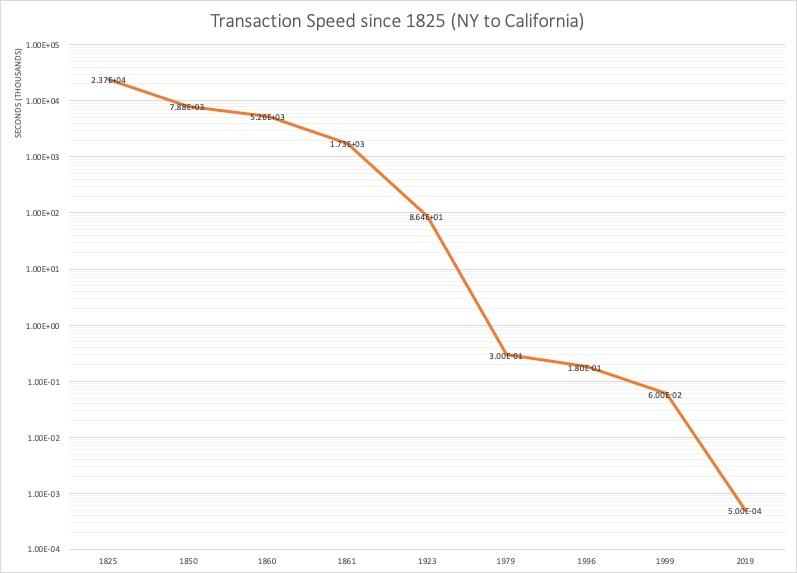

![Source: SimilarWeb]](/images/thumb/d/d2/CompetitionMarketShare.png/700px-CompetitionMarketShare.png)
